Christian Levin has a difficult job at the Volkswagen group.
The 55-year-old Swede was named chief executive officer of the Traton trucking unit after a management shakeup last year. He’s to steer a turnaround of the business after Europe’s biggest carmaker struggled for years to improve cooperation between its different commercial-vehicle brands. Levin is supposed to make Traton fit for the electric age, lead the integration of the Navistar International acquisition and create a new manufacturing hub in China.
Like VW’s incoming CEO Oliver Blume, Levin is doing double duty. He’s also heading Scania, Traton’s Swedish bus and truck business that’s electrifying its lineup. Scania aims to cut its Scope I and II emissions to 50% of 2015 levels by mid-decade — all while reaching double-digit margins. The brand has partnered with startups including electric-truck maker Einride and Northvolt, which will supply cells to a battery-assembly plant Scania is setting up next to its existing chassis factory near Stockholm.
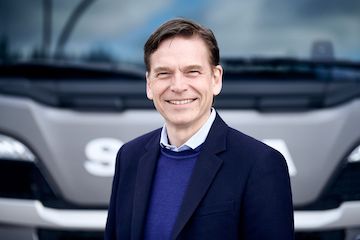
Reporter Rafaela Lindeberg spoke with Levin about his push to transform Scania into a maker of emissions-free trucks and buses, and the challenges ahead. Here’s an excerpt of the interview, edited for length and clarity.
Scania, Volvo and startups like Volta Trucks or Einride are all based in Sweden — is the country aiming to lead in electric trucking?
Sweden is becoming a Silicon Valley for sustainable solutions and for electrification. We should be proud of that. We no longer need to run to Asia to find all the solutions. Of course, we are still quite dependent on Asia and the US in terms of hardware around digitalization. But when it comes to software and electrification we are beginning to find quite a lot here at home.
What's the nature of your partnership with Einride?
We are at an early stage. Now in the beginning we take the vehicle supplier role, they take the logistics role, and we collaborate on the software interface. Einride is a logistics company offering a green transport solution which is incredibly cool. All our traditional customers are thinking about: What will the business case look like, will there be enough charging capacity, will there be green electricity? There are a lot of big questions. Einride is pretty brave. They throw themselves out there and say, we'll solve it. They sign transport buyers who want green transport, and there are a lot of them.
Where do you see the heavy-truck sector going?
It’s clearly moving toward battery-electric as the dominant technology. That path will go via alternative fuels. It’s easy to forget that we have millions of vehicles — I believe it’s four million heavy trucks in Europe — that you can refuel with something other than fossil if you get political pressure on that front. But technically speaking, it’s battery-electric. We have proven it’s possible by delivering a number of pre-series vehicles that can handle the most difficult tasks. This spring, SCA got a battery-powered truck with an 80-ton capacity from us. It’s a timber truck that will go off-road in northern Sweden where it can get insanely cold. So you have three difficult things to deal with: the load’s heavy, it's cold and you have bad roads. Most people including myself believed that could never work with an electric rig. But we proved that we can do that now, and that’s a signal to our customers and to politicians that this works without any doubt.
So what happens now?
It’s necessary to get the conditions in place to get this technology out on the roads in large volumes. For that to happen we need a bit of help from politicians. As battery cells are very expensive, these vehicles will also be very expensive, making them a significant investment for a customer. At the same time, the cost per mile is significantly lower. While electricity has become more expensive, so has diesel — so you are still saving on every kilometer you drive. We and many others have done the math to figure out when the diesel vehicle becomes more expensive than the electric version. For city buses, that has already happened, and for smaller distribution vehicles it’s happening right now. For heavy vehicles it will happen on a large scale in 2025-2030 in developed markets and first in Europe. But that requires a price on carbon-dioxide emissions, a functioning charging network and access to enough green electricity.
What made you invest in battery startup Northvolt?
An electric truck may be green during its operation, but if you emit several thousand tons of CO2 to produce the battery, then it’s not green. We like Northvolt as their batteries have a very good performance, but even more because they have thought from the beginning about a sustainable and circular system. That means we can have a good environmental conscience when we deliver the vehicle — that the batteries do not have a large carbon footprint — and also that Northvolt is committed to taking batteries back for recycling.
So what's your thinking behind setting up your own battery assembly line?
What we get from Northvolt — rectangular battery cells in the hundreds of thousands — is something that looks like old VHS tapes. They are put together in large modules and then packed in big boxes which are then attached to the vehicle, anything from 1 box to 6 or 7 boxes to get enough energy. It sounds like you just pack small battery cells into a toy, but it's not as easy as it sounds. It requires an enormous amount of care, cooling, heat and protection against vibrations. It requires collision protection and a number of other things. That part is so difficult and so crucial that we want to do it ourselves. That's why we're building that assembly plant right next to where the trucks are bolted together.
You’re also backing Swedish fossil-free steel startup H2 Green Steel.
Yes, just like at Northvolt, we were one of the first investors and a bit for the same reason. When it comes to our carbon footprint, we have come a long way. We will reduce emissions 50% by 2025 and we will manage that with a fairly large margin. What remains then is the material in the vehicle. A traditional truck is made up of 75% steel, and steelmaking emits a lot of CO2. Just like in our industry, we have steel producers that want to be ahead and are prepared to invest in the technology of the future. So we wanted to support that by buying a small share.
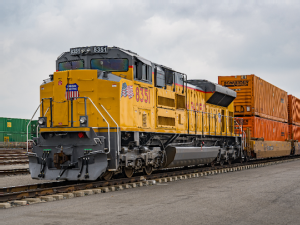
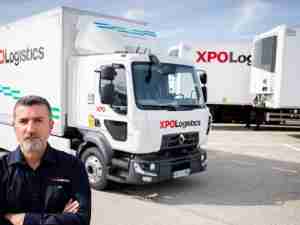
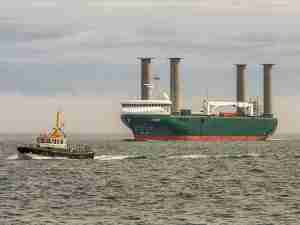
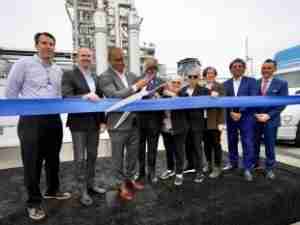


_-_28de80_-_58820516bd428ab3fd376933932d068c43db9a4a_lqip.jpg)




